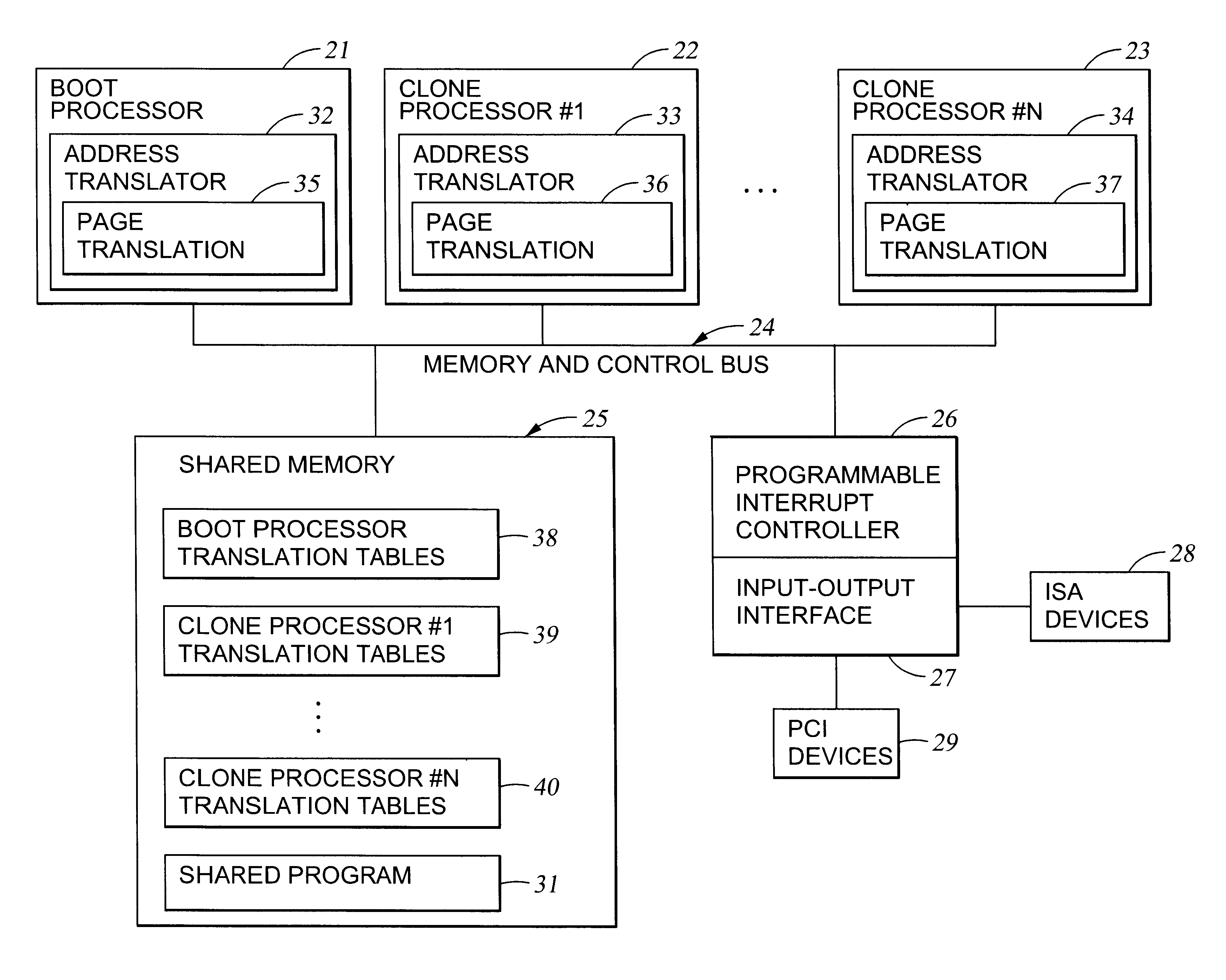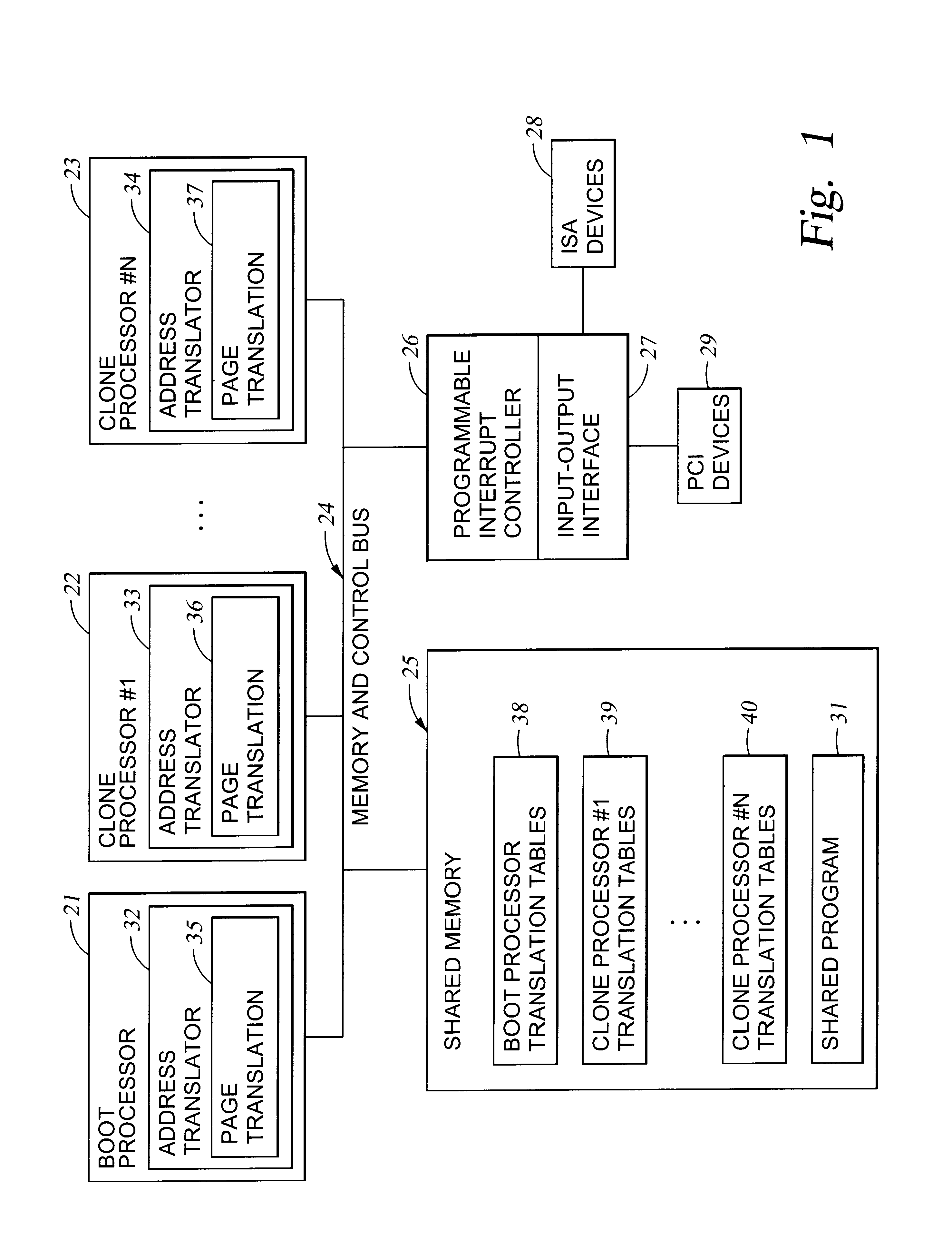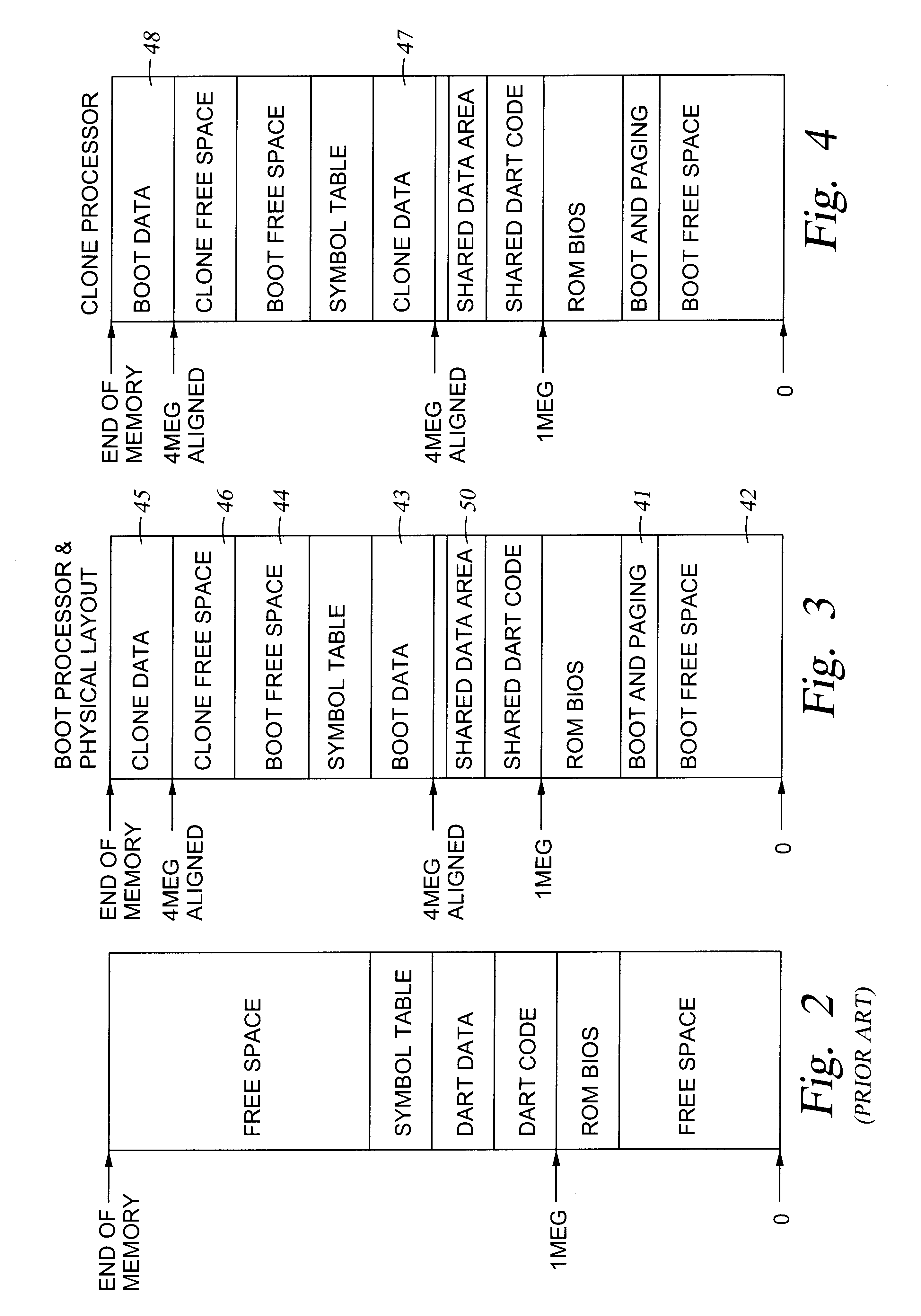Method of sharing memory in a multi-processor system including a cloning of code and data
a multi-processor system and shared memory technology, applied in the direction of memory adressing/allocation/relocation, program control, instruments, etc., can solve the problems of destroying the current state of the shared memory area, affecting system performance, and increasing the detrimental effect of instructions
- Summary
- Abstract
- Description
- Claims
- Application Information
AI Technical Summary
Benefits of technology
Problems solved by technology
Method used
Image
Examples
Embodiment Construction
With reference to FIG. 1 of the drawings, there is shown a block diagram of a multiprocessor system incorporating the present invention. The system includes a boot processor 21 and one or more clone processors 22, 23. In this example, the boot processor 21 is functionally identical to the clone processors 22, 23. However, the boot processor 21 is responsible for initiating the system and for booting operating system routines. The clone processors are activated after the boot processor, as will be further described below with reference to FIG. 6. If the system of FIG. 1 were to be compliant with the Intel MultiProcessor Specification, then the boot processor 21 would be called the "boot strap processor (BSP)", and the clone processors 22, 23 would be called "application processors (AP)." In the example of FIG. 1, the processors 22, 23 are called "clone" processors because when they are up and running respective invocations of a shared program, they perform substantially the same func...
PUM
 Login to View More
Login to View More Abstract
Description
Claims
Application Information
 Login to View More
Login to View More - R&D
- Intellectual Property
- Life Sciences
- Materials
- Tech Scout
- Unparalleled Data Quality
- Higher Quality Content
- 60% Fewer Hallucinations
Browse by: Latest US Patents, China's latest patents, Technical Efficacy Thesaurus, Application Domain, Technology Topic, Popular Technical Reports.
© 2025 PatSnap. All rights reserved.Legal|Privacy policy|Modern Slavery Act Transparency Statement|Sitemap|About US| Contact US: help@patsnap.com



